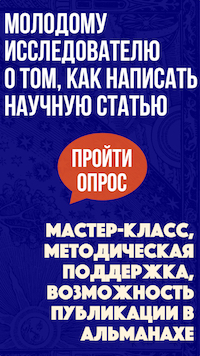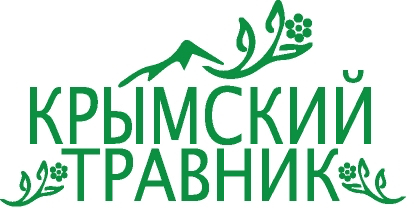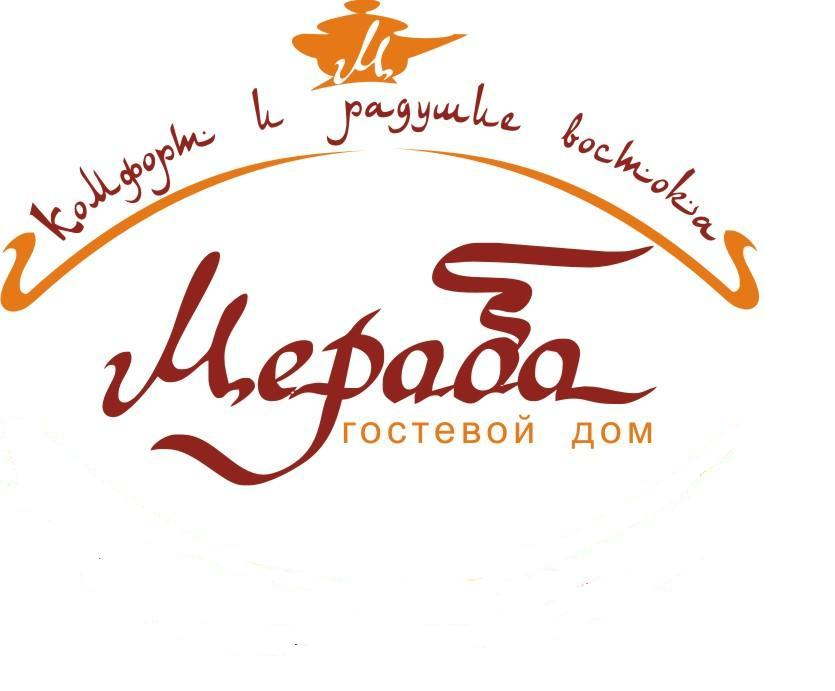МОЛОДЁЖНЫЙ ПРОЕКТ ДЛЯ ТЕХ, КТО ДЕЛАЕТ ПЕРВЫЕ ШАГИ В НАУКЕ
/components/bitrix/system.auth.form/auth_alm/images/login.gif) Войти
Войти /components/bitrix/system.auth.form/auth_alm/images/register.gif) Регистрация
Регистрация
Войти в корпоративную почту как автор/член редколлегии/рецензент журнала
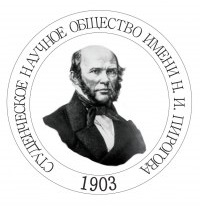


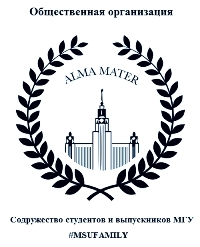
ТЕРРИТОРИЯ ВРЕМЕНИ / TERRITORY OF TIME / TERRITORIUM DER ZEIT
Маляров В.Н.
Российские инженерные рабочие войска в эпоху великих потрясений. Часть 2. Рабочие войска Красной и Белой армий в годы Гражданской войны и иностранной военной интервенции
Продолжение. Начало см.: Маляров В.Н. Российские инженерные рабочие войска в эпоху великих потрясений. Часть 1. От Первой мировой войны до Октября 17-го [Электронный ресурс] // Электронное научное издание Альманах Пространство и Время. — 2014. Т. 7. Вып. 1. Стационарный сетевой адрес: 2227-9490e-aprovr_e-ast7-1.2014.51
Маляров Валерий Николаевич, доктор исторических наук, профессор, Военный инженерно-технический университет (Санкт-Петербург)
E-mail: valent4545@mail.ru
В статье в контексте происходившей в России радикальной ломки социальных связей в результате Октябрьской революции рассматривается формирование и деятельность инженерных рабочих войск как РККА, так и Белой армии, а также условия комплектования их инженерными и рабочими кадрами начиная с 25 октября 1917 г. и в годы Гражданской войны. В исследовательских целях в оборот введен ряд новых архивных документов.
Ключевые слова: Советская Россия, РККА, Белая армия, интервенция, Гражданская война, военные инженеры, рабочие инженерные войска, военно-полевые строительства, Коллегия по инженерной обороне, Центральное военно-техническое управление, Главное военно-инженерное управление, укрепленный район, военно-инженерные школы, военно-инженерная академия.
Литература
Инженерный документальный фонд Военно-исторического музея артиллерии, инженерных войск и войск связи (ИДФ ВИМАИВиВС). Д. 2448.
ИДФ ВИМАИВиВС. Д. 2501.
ИДФ ВИМАИВиВС. Д. 2539.
ИДФ ВИМАИВиВС. Д. 3504.
ИДФ ВИМАИВиВС. Д. 3963.
ИДФ ВИМАИВиВС. Д. 5226.
ИДФ ВИМАИВиВС. Д. 9996.
Российский государственный архив кинофотоматериалов (РГАКФД). Ед. хр. 3-285 ч/б, 3-277 ч/б.
Российский государственный военно-исторический архив (РГВИА). Ф. 802. Оп. 1. Д. 41.
РГВИА. Ф. 2003. Оп. 1. Д. 698.
РГВИА. Ф. 2052. Оп. 1. Д. 153.
Российский государственный военный архив (РГВА). Ф. 6. Оп. 6. Д. 136, 139.
РГВА. Ф. 22. Оп. 2. Д. 50; Оп. 3. Д. 5, 43; Оп. 5. Д. 42.
РГВА. Ф. 485—499, 686, 700, 702, 707, 709, 712, 715, 720, 721, 723, 724, 726, 737, 743, 744, 746, 751, 758, 765, 771, 777, 780, 781, 785, 787, 789, 800, 806, 827, 831, 834, 852, 855, 15036—15197, 15239—15328, 15329—15422, 15423—15525.
РГВА. Ф. 39499. Oп. 1. Д. 1.
РГВА. Ф. 39619. Оп. 1. Д. 19.
РГВА. Ф. 39624. Оп. 1. Д. 235.
РГВА. Ф. 40051. Оп. 1. Д. 1, 13.
Центральный государственный архив советской армии (ЦГАСА). Ф. 3. Оп. 1. Д. 41.
Центральный государственный архив Санкт-Петербурга (ЦГА СПб.). Ф. 188. Оп. 4. Д. 111.
ЦГА СПб. Ф. 6875. Оп. 1. Д. 27.
Аганов С.Х., Егоров Е.П. Инженерные войска Советской Армии 1918—1945. М.: Воениздат, 1985.
Александров Е.Г. Краткий исторический очерк развития инженерных войск Русской армии. М.: ВИА, 1939.
Аралов С.И. В.И. Ленин и Красная Армия: Воспоминания. М.: Знание, 1958.
Блок А.А. Собр. соч.: В 8 т. Т. 6. М., Л.: ГИХЛ, 1962.
Богатский М.Н. Военный инженер К.И. Величко (1856—1927). М.: ВИА, 1957.
В.И. Ленин. Биографическая хроника. М., Политиздат, 1978.
Верховский А.И. На трудном перевале. М.: Воениздат, 1959.
Вискунов Г. Фортификация в условиях гражданской войны // Военная мысль. 1919. № 2. С. 33—37.
Военно-инженерная академия им. В.В. Куйбышева. 150 лет. М.: ВИА, 1969.
Б.Г.П[ознанский]. Занятия в Военно-инженерной академии в 1919 г. // Военно-инженерный журнал. Пг. 1920. № 1. С. 77—83.
Военно-энциклопедический словарь военно-строительного комплекса МО РФ. М.: Патриот, 2004.
Войтиков С. Высшие кадры Красной Армии 1917—1921 гг. М.: Эксмо, Алгоритм, 2010.
Воспоминания о В.И. Ленине: В 5 т. Т. 3. М.: Политиздат, 1969.
Врангель П.Н. Записки: В 2 ч. Ч. II. М.: Голос, 1995.
Донских И.М., Родачинов Н.А. Военные строители на службе Родине. Симферополь. 1981.
Дубленных В.В. Белая армия на Урале. Историческая справка частей и соединений. Екатеринбург: Изд-во УрГУ. 2008.
Дьяченко В.П. История финансов СССР. М.: Политиздат, 1978.
Егоров Н.Д. Русский генералитет накануне Гражданской войны. (Материалы к биографическому справочнику). М.: Русский путь, 2004.
Из истории русского военно-инженерного искусства. М.: Воениздат, 1952.
Инженерные войска в боях за Советскую Родину. М.: Воениздат, 1970.
Инженерные войска России. СПб.: ВИСИ, 2010.
Кавтарадзе А.Г. Военные специалисты на службе Республики Советов 1917—1920. М.: Наука, 1988.
Колесник А.Н. Развитие военно-строительных формирований Советских Вооруженных Сил в годы Гражданской войны и межвоенный период. 1918—1941: Дисс. ... к. ист. н. М., 1986.
Ленин В.И. Полное собрание сочинений. 5-е издание. М.: Изд-во политической литературы, 1965—1975
Маляров В.Н. Инженерные рабочие войска России и Советского Союза (август 1914 — июнь 1941). СПб.: ВИ(ИТ), 2014.
Молодцыгин М.А. Красная Армия: рождение и становление, 1917—1920 гг. М.: Институт российской истории, 1997.
Мостовой Ф.Е. Деятельность Коммунистической партии по созданию и укреплению инженерных войск Красной Армии в период иностранной военной интервенции и Гражданской войны (1918—1920 гг.): Дисс. … к.ист.н. М., 1980.
Павлюченков С.А. Крестьянский Брест, или Предыстория большевистского НЭПа. М: Русское книгоиздательское товарищество, 1996.
Петерс Д.И. Дополнительные материалы к истории наград периода Гражданской войны и Белого движения 1918—1922 гг. Филадельфия, 1997.
Первая военно-инженерная школа России 1791—2001: Исторический очерк / Под ред. М.А. Логинова. Кстово: НФВИУ, 2001.
Решин Е.Г. Генерал Карбышев. М.: ДОСААФ, 1980.
Русская армия в Великой войне: Картотека проекта [Электронный ресурс]. Режим доступа: http://www.grwar.ru/persons/persons.html.
Сборник лиц, награжденных орденом Красного Знамени и Почетным революционным оружием. М.—Л.: ГВИЗ, 1926.
Смирнов А.Г. Полное и окончательное безобразие [Электронный ресурс] // Зеркало. 2004. № 24. Режим доступа: http://magazines.russ.ru/zerkalo/2004/24/sm10.html.
Советские инженерные войска в 1918—1940 гг. Сб. статей. М.: Воениздат, 1959.
Сорокин И.П. Военно-строительные органы за 50 лет // Труды ВИТУ. 1967. Вып. 84.
Цирлин А.Д., Бирюков П.И., Истомин В.П., Федосеев Е.Н. Инженерные войска в боях за Советскую Родину. М.: Воениздат, 1970.
Школы военных инженеров в 1701—1960 годах [Электронный ресурс] // Инженерная школа. Режим доступа: http://viupetra2.3dn.ru/search/.
Щетинов Ю.А., Старков Б.А. Красный маршал. М.: Молодая гвардия, 1990.
Cantir C. "The Allied Punishment and Attempted Socialisation of the Bolsheviks (1917—1924): An English School Approach." Review of International Studies 37.04 (2011): 1967—1994.
Djurdjevic M., Kadijevic A. "Russian Emigrant Architects in Yugoslavia (1918—1941)." Centropa 2 (2001): 139—148.
Guins G.C. "Russians in Manchuria." Russian Review 2.2 (1943): 81—87.
Lonergan G. "Resistance, Support and the Changing Dynamics of the Village in Kolchakia During the Russian Civil War." Revolutionary Russia 21.1 (2008): 57—72.
Smele J.D. Civil War in Siberia: The Anti-Bolshevik Government of Admiral Kolchak, 1918—1920. New York: Cambridge University Press, 2006.
Цитирование по ГОСТ Р 7.0.11—2011:
Маляров, В. Н. Российские инженерные рабочие войска в эпоху великих потрясений. Часть 2. Рабочие войска Красной и Белой армий в годы Гражданской войны и иностранной военной интервенции [Электронный ресурс] / В.Н. Маляров // Электронное научное издание Альманах Пространство и Время. — 2015. — Т. 8. — Вып. 2. — Стационарный сетевой адрес: 2227-9490e-aprovr_e-ast8-2.2015.51
Malyarov V.N.
Russian Engineering Labor Troops in the Epoch of Great Upheaval. Part 2. Engineering Labor Troops of the Red and White Armies in the Civil War and Foreign Military Intervention
Continuation. To read the beginning, see: Malyarov, V. N. "Russian Engineering Labor Troops in the Epoch of Great Upheaval. Part 1. From the First World War to October 1917." Elektronnoe nauchnoe izdanie Al'manakh Prostranstvo i Vremya [Electronic Scientific Edition Almanac Space and Time] 7.1 (2014). Web. <2227-9490e-aprovr_e-ast7-1.2014.51>. (In Russian).
Valery N. Malyarov, D.Phil. (History), Professor, Military Engineering and Technical University (St. Petersburg)
E-mail: valent4545@mail.ru
Formation of the administrative and military- economic institutions in Russia during the civil war and the intervention of the allied forces (1918—1921) took place on the territory controlled by both the Bolsheviks and the White Army. However, this aspect, especially the state of military engineering and military engineering troops, it is not investigated in Western historiography. Even Russian historiography is limited to mention a few famous names and few major military-engineering solutions that period. Meanwhile, in this case, we should talk not only about the impact of the revolutionary break-up of former social relations and the civil war on the Corps of Engineers, but also on the impact of state and quality of engineering troops to the results of military operations and social relations (at least in the army). This topic is of interest in terms of the fortification art development during the Civil War (for example, there is extensive bibliography on fortification in American Civil War).
This article is the second piece of my research in the history of Russian Corps of Engineers. Subjects of this part are institutional aspects of Russian Corps of Engineers formation in Civil War (both in Red and White armies), training and activity of labor construction units (divisions) and military engineering personnel in the wartime conditions. I put my study on the basis of a large array of previously not studied archival materials from the central archives of Russia. In this article, I tried to fill the existing gaps in the history of the becoming of Soviet engineer troops, its command and control, as well as defensive engineering and construction measures on the Civil War fronts in 1918—1921 (especially on the Eastern Front against Admiral Kolchak).
In the first year of Soviet Russia, the Bolsheviks began to form a control system engineering troops as part of a new army. To do this, two management headquarters were set up in series. These were the Central Military Technical Department and Main Military Engineers Department, which was then transformed into the Engineer Defense Division. At the head of these institutions were Konstantin Velichko and Alexey Ovchinnikov, who were most experienced and authoritative officers of engineer troops of Tsarist Russia, adhered to Bolsheviks. They are attracted to cooperation the most qualified military engineering personnel (for example, an outstanding military engineer Dmitry Karbyshev) and were able to efficiently use the available resources. These engineers designed and built a new type of fortified regions to cover all major destinations and cities in Russia, which significantly increased security and military potential of the new government. This fact, as well as the centralization of the Bolshevik government and military control (including military engineering controls) contributed significantly to the victory of the Red Army over the fragmented and far less coordinated actions of the White Army (whose leaders often do not find a common language because of their ambitions). In addition, the leaders of the White movement and their military engineering departments and divisions had a much bigger deficit of material and human resources, a much weaker organization, and the lack of time, because they were attackers. This significantly weakened them both in the attack and defense.
In my article, I pay special attention to the political and social changes in Russian society and in the army caused by Civil War. Thus, I show the reasons for Russian military engineers adhering from the Red Army to the White one and back were not only ideological but also economic (necessity for survive a depreciation of money and devastation) and personal (corporate relations, personal likes and dislikes).
Also I first has made a summary table of colonels and generals of engineering troops of the Red, White and national armies in 1918—1920.
I conclude in time of war, in the destruction of social bonds, defensibility of the army and viability of the state essentially depend on control of military engineering troops (which determine arrangement of theaters of war and preservation of civilian communications), on the organization of human and material resources for the needs of military construction.
Keywords: Soviet Russia, Red Army, White Army, intervention, civil war, Russian military engineers, Engineering Corps, labor construction troops, Military Engineering Schools, Military Engineering Academy, military field construction units (divisions), Central Military Technical Department, Main Military Engineers Department, Engineer Defense Division, fortified region.
References:
Aganov S.Kh, Egorov E.P. Engineering Troops of the Soviet Army, 1918—1945. Moscow: Voenizdat Publisher, 1985. (In Russian).
Alexandrov E.G. A Brief Historical Essay on the Development of Engineering Troops of the Russian Army. Moscow: Military Engineering Academy Publisher, 1939. (In Russian).
Aralov S.I. Vladimir Lenin and the Red Army: Memories. Moscow: Znanie Publisher, 1958. (In Russian).
B.G.P[oznansky]. "Classes at the Military Engineering Academy in 1919." Military Engineering Journal 1 (1920): 77—83. (In Russian).
Blok A.A. Collected Writings. Moscow and Leningrad: Fiction Publisher, 1962, volume 6. (In Russian).
Bogatsky M.N. Military Engineer Konstantin I. Velichko (1856—1927). Moscow: Military Engineering Academy Publisher, 1957. (In Russian).
Cantir C. "The Allied Punishment and Attempted Socialisation of the Bolsheviks (1917—1924): An English School Approach." Review of International Studies 37.04 (2011): 1967—1994.
Central State Archive of the Soviet Army, fund 3, inventory 1, file 41. (In Russian).
Central State Archive of St. Petersburg, fund 188, inventory 4, file 111. (In Russian).
___________________ fund 6875, inventory 1, file 27. (In Russian).
Collection of Persons Awarded Order of the Red Banner and the Honorary Revolutionary Weapon. Moscow and Leningrad: State Military Publishing House Publisher, 1926. (In Russian).
Djurdjevic M., Kadijevic A. "Russian Emigrant Architects in Yugoslavia (1918—1941)." Centropa 2 (2001): 139—148.
Donskikh I.M., Rodachinov N.A. Military Builders at the Service of the Motherland. Simferopol, 1981. (In Russian).
Dublennykh V.V. White Army in the Urals. Historical Background of Units and Formations. Ekaterinburg: Ural State University Publisher, 2008. (In Russian).
Dyachenko V.P. History of Finance of the USSR. Moscow: Politizdat Publisher, 1978. (In Russian).
Egorov N.D. Russian Generals on the Eve of the Civil War. (Materials for Biographical Directory). Moscow: Russian Way Publisher, 2004. (In Russian).
Engineers Documentary Fund of Military Historical Museum of Artillery, Engineer and Signal Corps, file 2448. (In Russian).
___________________ file 2501. (In Russian).
___________________ file 2539. (In Russian).
___________________ file 3504. (In Russian).
___________________ file 3963. (In Russian).
___________________ file 5226. (In Russian).
___________________ file 9996. (In Russian).
Engineer Troops in Battles for the Soviet Motherland. Moscow: Voenizdat Publisher, 1970. (In Russian).
From the History of Russian Military Engineering Art. Moscow: Voenizdat Publisher, 1952. (In Russian).
Guins G.C. "Russians in Manchuria." Russian Review 2.2 (1943): 81—87.
Kavtaradze A.G. Military Specialists in the Service of the Soviet Republic. 1917—1920. Moscow: Nauka Publisher, 1988. (In Russian).
Kolesnik A.N. Development of Military Construction Commands of the Soviet Armed Forces During the Civil War to the Interwar Period. 1918—1941. Ph.D. diss. Moscow, 1986. (In Russian).
Lenin V.I. Complete Writings. Moscow: Politicheskaya literatura Publisher, 1965—1975. (In Russian).
Loginov M.A., ed. The First Military-Engineering School of Russia, 1791—2001: Historical Essay. Kstovo: Nizhny Novgorod branch of Higher Engineering University Publisher, 2001. (In Russian).
Lonergan G. "Resistance, Support and the Changing Dynamics of the Village in Kolchakia During the Russian Civil War." Revolutionary Russia 21.1 (2008): 57—72.
Malyarov V.N. Engineering Work Troops of Russia and the Soviet Union (August 1914 — June 1941). St. Petersburg: Military Institute (Technical Engineering) Publisher, 2014. (In Russian).
Memories about Vladimir Lenin. Moscow: Politizdat Publisher, 1969, volume 3. (In Russian).
Military-Encyclopedic Dictionary of Military-Construction Complex of the Ministry of Defence of the Russian Federation. Moscow: Patriot Publisher, 2004. (In Russian).
Molodtsygin M.A. The Red Army: The Birth and Becoming, 1917—1920. Moscow: Institute of Russian History Publisher, 1997. (In Russian).
Mostovoy F.E. The Activities of the Communist Party in Building and Strengthening of Engineering Troops of the Red Army during the Period of Foreign Military Intervention and the Civil War (1918—1920). Ph.D. diss. Moscow, 1980. (In Russian).
Pavlyuchenkov S.A. Peasant Brest, or Prehistory of the Bolsheviks’ ‘New Economic Policy’. Moscow: Russian Book Publishing Association Publisher, 1996. (In Russian).
Peters D.I. Additional Materials for History of Awards of the Civil War and the White Movement of 1918—1922. Philadelphia, 1997. (In Russian).
Reshin E.G. General Dmitry Karbyshev. Moscow: DOSAAF Publisher, 1973. (In Russian).
Russian Army in the Great War: OpenCards of the Project. N.p., n.d. Web. <http://www.grwar.ru/persons /persons.html>. (In Russian).
Russian State Archive of Film and Photo-materials, storage units 3-285 black&white, 3-277 black&white. (In Russian).
Russian State Military Archive, fund 6, inventory 6, files 136, 139. (In Russian).
_____________ fund 22, inventory 2, file 50; inventory 3, files 5, 43; inventory 5, file 42. (In Russian)
_____________ funds 485—499, 686, 700, 702, 707, 709, 712, 715, 720, 721, 723, 724, 726, 737, 743, 744, 746, 751, 758, 765, 771, 777, 780, 781, 785, 787, 789, 800, 806, 827, 831, 834, 852, 855, 15036—15197, 15239—15328, 15329—15422, 15423—15525. (In Russian).
_____________ fund 39499, inventory 1, file 1. (In Russian).
_____________ fund 39619, inventory 1, file 19. (In Russian).
_____________ fund 39624, inventory 1, file 235. (In Russian).
_____________ fund 40051, inventory 1, files 1, 13. (In Russian).
Russian State Military Historical Archive, fund 802, inventory 1, file 41. (In Russian).
_____________ fund 2003, inventory 1, file 696. (In Russian).
_____________ fund 2052, inventory 1, file 153. (In Russian).
"Schools of Military Engineers in 1701—1960." Engineering School. N.p., n.d. Web. <http://viupetra2.3dn.ru/ search/>. (In Russian).
Shchetinin Yu.A., Starkov B.A. Red Marshal. Moscow: Molodaya gvardiya Publisher, 1990. (In Russian).
Smele J.D. Civil War in Siberia: The Anti-Bolshevik Government of Admiral Kolchak, 1918—1920. New York: Cambridge University Press, 2006.
Smirnov A.G. "Full and Final Unseemliness." Mirror. 24 2004. Web. <http://magazines.russ.ru/zerkalo/2004/ 24/sm10.html>. (In Russian).
Sorokin I.P. "Military Construction Bodies during 50 Years." Proceedings of the Military Technical University 84 (1967): n.p. (In Russian).
The Engineer Troops of Russia. St. Petersburg: Military Engineering-Technical University Publisher, 2010. (In Russian).
The Soviet Corps of Engineers in 1918—1940. Moscow: Voenizdat Publisher, 1959. (In Russian).
Tsirlin A.D., Biryukov P.I., Istomin V.P., Fedoseyev E.N. Engineer Troops in the Battles for the Soviet Motherland. Moscow: Voenizdat Publisher, 1970. (In Russian).
V.V. Kuibyshev Military Engineering Academy. 150 Years. Moscow: Military Engineering Academy Publisher, 1969. (In Russian).
Verkhovsky A.I. On the Difficult Pass. Moscow: Voenizdat Publisher, 1959. (In Russian).
Viskunov G. "Fortification during the Civil War." Military Thought 2 (1919): 33—37. (In Russian).
Vladimir Lenin: Biographical Chronicle. Moscow: Politizdat Publisher, 1978. (In Russian).
Voytikov S. Higher Cadres of the Red Army of 1917—1921. Moscow: Eksmo Publisher, Algoritm Publisher, 2010. (In Russian).
Wrangel P.N. Notes. Moscow: Golos Publisher, 1995, part 2. (In Russian).
Cite MLA 7:
Malyarov, V. N. "Russian Engineering Labor Troops in the Epoch of Great Upheaval. Part 2. Engineering Labor Troops of the Red and White Armies in the Civil War and Foreign Military Intervention." Elektronnoe nauchnoe izdanie Al'manakh Prostranstvo i Vremya [Electronic Scientific Edition Almanac Space and Time] 8.2 (2015). Web. <2227-9490e-aprovr_e-ast8-2.2015.51>. (In Russian).




